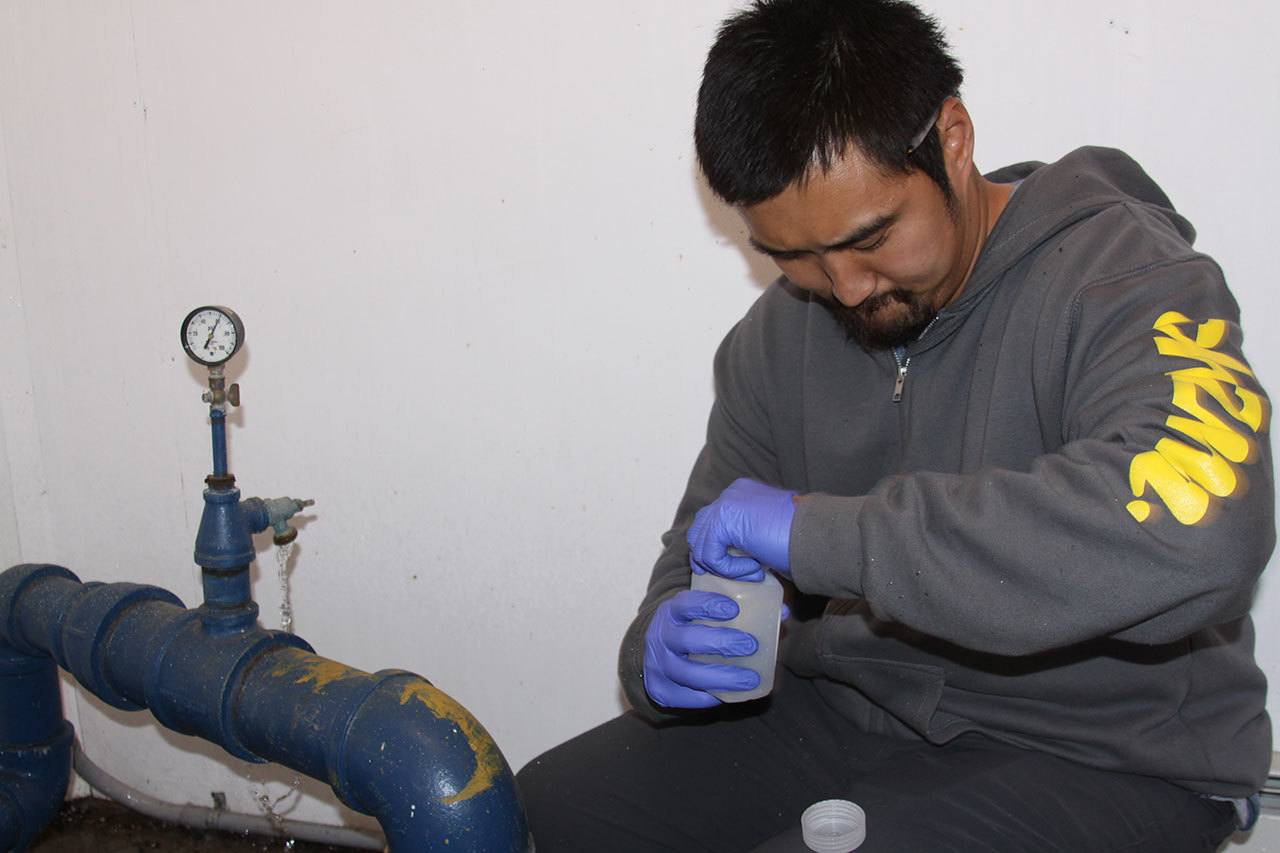The wait is almost over for the more than 1,000 residents who make up Admiral’s Cove.
Within three weeks, residents from the Central Whidbey neighborhood should know if their water is safe to drink.
Two Navy-contracted water testers sampled two community wells from the Admiral’s Cove Water District late Monday afternoon and said that results should be known within two-to-three weeks.
The tests were part of the second phase of an investigation by the Navy around Outlying Landing Field Coupeville to look for contaminants in private drinking water wells and water systems.
The Navy has been testing for the presence of per- and polyfluoroalkyl chemicals, or PFAS, in wells around Naval Air Station Whidbey Island’s Ault Field and the OLF since November after the chemicals were found in a drinking water well on OLF in September.
The substances were once used in firefighting foam.
Since that finding, the Navy has done extensive testing in properties near OLF Coupeville and Ault Field.
The result was the discovery of seven wells near OLF and one well near Ault Field that had samples of PFAS — specifically perfluoroctane (PFOS) and perfluorooctanoic acid (PFOA) — above the Environmental Protection Agency’s lifetime health advisory of 70 parts per trillion.
After the discoveries, the Navy decided to test private drinking water systems further south of its original sampling area in Coupeville.
That brought two samplers from CH2M, an Englewood, Colo.,-based engineering services company, to the Admiral’s Cove Water District, which serves nearly 500 households.
Phase 2 expands the testing a half-mile south of the original one-mile zone centered at OLF.
“I hope our water is good because they (the wells) are so deep,” said Doug Smith, one of the commissioners with the Admiral’s Cove Water District.
“Hopefully, the deeper they are, the less chance.”
Andy Campbell, owner of Freeland-based Whidbey Water Services, which manages water systems throughout the island, said anticipation is high in Admiral’s Cove, one of his largest customers.
He said he got test results back from the Crockett Lake Estates community well last week with no contaminants detected.
Smith said it made sense for Admiral’s Cove to wait and let the Navy pay for more thorough testing as opposed to hiring someone.
“There was no reason to spend the money on it,” Smith said.
“Besides, it ends up going to the same lab,” commissioner Gary Winlund said.
“The Navy’s test is more stringent than the test that we could get,” Campbell said. “They’re doing a higher level of testing.”



